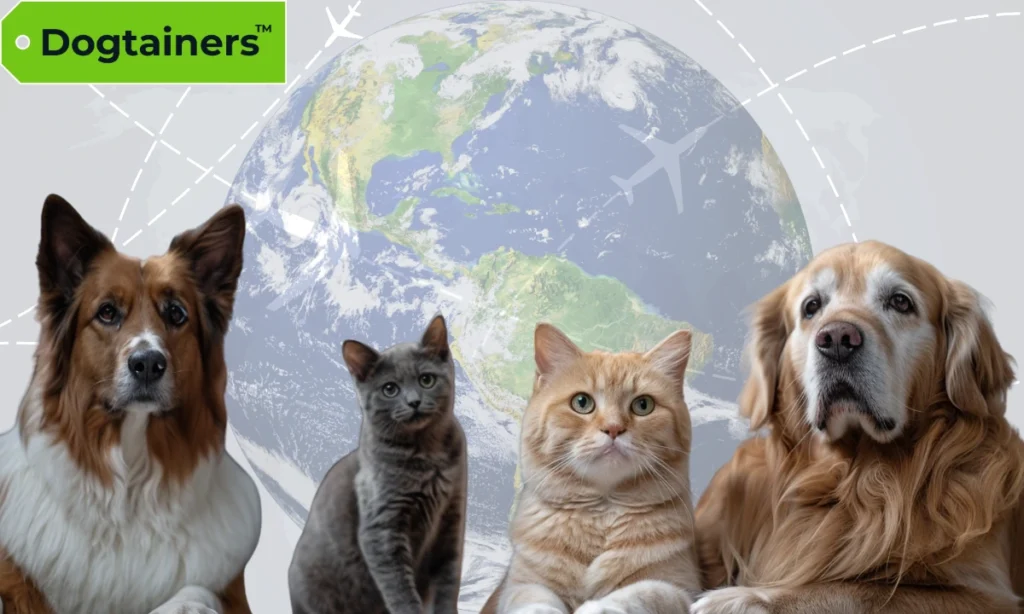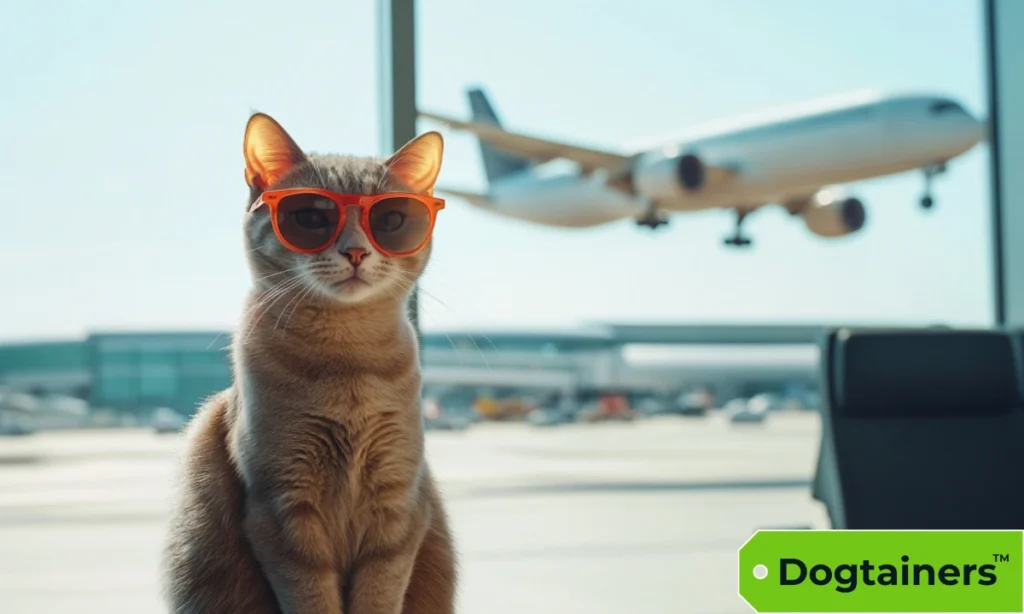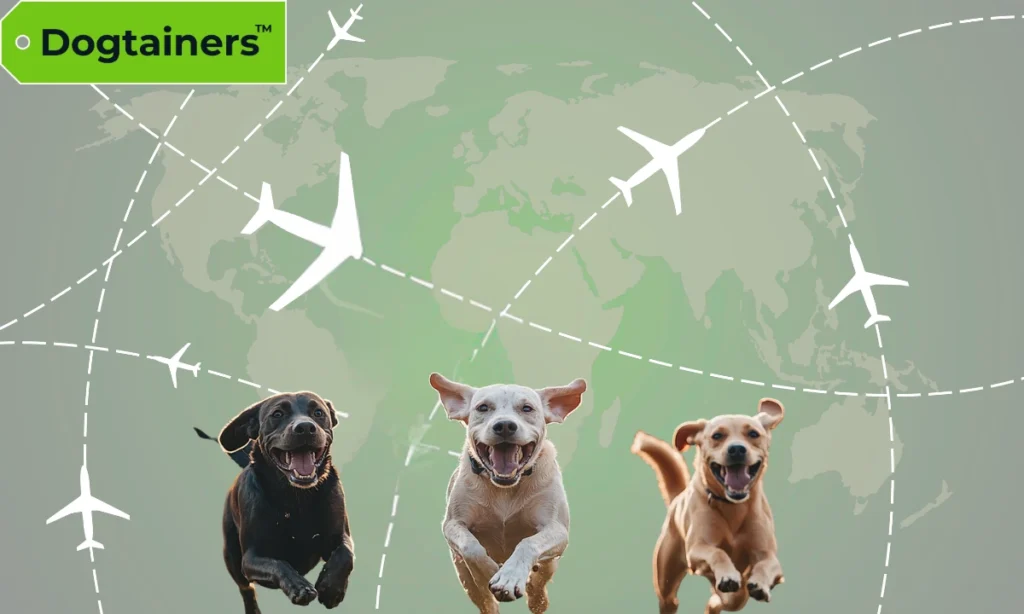Should I sedate my pet for air travel? People often ask this question before transporting their pets by plane.
We strongly recommend NOT sedating pets before air travel. Pets under sedation can become:
- Dehydrated
- Disorentiated
- Travel sick easily
Also, it’s harder for authorities to assess your pet’s health when they’re under sedation. Aircraft personnel will reject your pet for travel if they appear sedated.
7 Reasons Sedating Your Pet for Air Travel is a Bad Idea
1. Health Risks
Sedation can cause various health issues in pets, such as respiratory and cardiovascular problems. The changes in cabin pressure and altitude can exacerbate these issues, leading to serious complications or even death.
2. Impaired Thermoregulation
Sedation can impair your pet’s ability to regulate their body temperature. This can be particularly dangerous when flying.
3. Increased Stress
While sedation is intended to reduce stress, it can sometimes have the opposite effect. Sedated pets may experience increased anxiety and disorientation due to the altered state of consciousness and inability to understand their surroundings.
4. Delayed Recovery
The effects of sedation can linger, leading to a prolonged recovery period after the flight. Pets might be groggy, disoriented, and unsteady for hours or even days, making it difficult for them to adjust to their new environment.
5. Masking Medical Issues
Sedation can mask symptoms of underlying medical conditions or injuries that might occur during the flight. This can delay necessary treatment and exacerbate the issues.
6. Behavioural Changes
Some pets may experience behavioural changes or negative reactions to sedation, including aggression, lethargy, or other uncharacteristic behaviours.
7. Difficulty in Monitoring
During air travel, it can be challenging to monitor a sedated pet’s condition. Aircraft personnel may not be able to provide the necessary care or notice if something goes wrong.
Overall, the potential risks and complications outweigh the perceived benefits of sedation. We recommend exploring other methods of reducing travel stress when travelling with pets.
Let’s look at these now.
Alternatives to Pet Sedation for Air Travel
Pet owners consider sedation because they want to relieve stress for their pets. This is completely understandable. We all want stress-free travel for you and your pets.
Sedatives aren’t your only option, though. We recommend some alternatives to pet sedation for air travel.
Crate Training
Your pet will travel in an IATA-approved travel crate. Doing crate training with your pet is always a good idea before transporting them.
Once you buy a crate, take the time to introduce your pet to it. Be patient and gentle while you let them become accustomed to the crate.
Make the crate comfortable and somewhere they like to go. You can use their favourite blanket or toy to help them get acclimated to the crate during training. And you can use treats during crate training for positive reinforcement.
Gradually increase the time your pet spends in the crate until they’re completely comfortable. The more time they spend in the crate before travelling, the easier the trip should be. Make the crate a happy place for your pet.
Choosing the right crate is essential for safe pet travel. Airline staff may turn your pet away if the travel crate is too small or too big.
Don’t worry, we’re here to help you choose the perfect crate for your furry companion.
Acclimating Pets for Travel
Familiarising your pet with the crate is one part of acclimating them for travel. But there are some other steps you can take.
Practise short trips with your pet leading up to departure day. Take your pet on short car rides in their carrier to get them used to the sensation of travelling.
Increase the duration of the trips gradually. Start with very short trips and gradually increase the duration as your pet becomes more comfortable.
At home, you can also play travel sounds when your pet is in the crate. Playing traffic and plane sounds can help get your pet accustomed to them.
Calming Products
Pheromone and herbal sprays can help calm your pet for travel. Spray their crate leading up to travel and top it up when you’re departing.
Pet calming products like Adaptil Collars also help. These release pheromones to help keep your dog calm during air travel.
Lavender oil, valerian and chamomile can have a calming effect on both dogs and cats. We recommend using them under the instructions of your vet or an experienced practitioner only.
Staying Calm Yourself
Your behaviour also affects your pet. Travelling with pets can be stressful, but staying calm is vital for your pet.
We know this is easier said than done. But your pet can tune into your emotions and become stressed if you are.
Staying calm and positive will help put them at ease. Be patient with your pet on departure day and reassure them.
We know an excellent way to help you stay calm. Choose the best pet transport company to help you with the process.
We’ve been providing stress-free pet transport for 50+ years. You and your pets are in calm hands with Dogtainers.
Conclusion
We strongly advise you against sedating your pet for air travel. Pets under sedation can become:
- Dehydrated
- Disorentiated
- Travel sick easily
Aircraft personnel may turn your pets away from the flight if they’re sedated.
Pet sedation for air travel also poses health risks like breathing and heart problems. And it can make your pets harder to monitor on their trip.
We recommend these alternatives to sedation:
- Crate training
- Acclimating pets for travel
- Trying pet calming products
- Staying calm before travelling yourself
Of course, using an experienced pet travel company like Dogtainers helps relieve stress. We’ve been transporting pets safely for 50+ years.
Get a quote today with the most experienced pet transport company in Australia.





Share this article